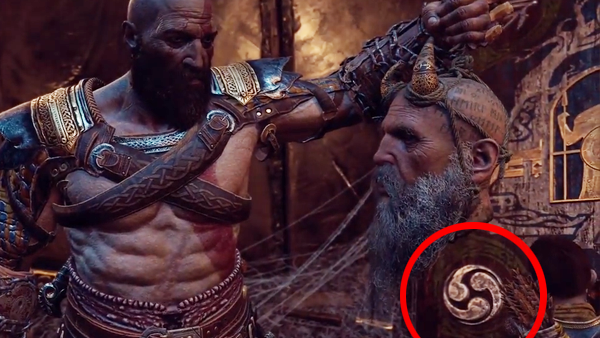God Of War Secretly Teases FOUR Potential Sequels We Want Right Now
1. Japanese Mythology (Mitsudomoe)

Hey Sony, if you're listening - do this one.
The above symbol is representative of Japanese mythology/religious history, and though its origins are to this day impossible to identify correctly, it is a regular fixture of Shinto shrines, the common religion in Japan. It stands as an icon of belief, peace and the cyclical nature of harmony, though enforcing such things when the Gods are literally bickering amongst themselves, is likely where a game would take place.
Interestingly, the Ryukyu Kingdom of the 15th to 19th century used this as their royal crest, and though it's highly unlikely God of War would start introducing real world elements like kingdoms and certain reigns, like the Eye of Horus, the Ryukyuans used the Mitsudomoe to represent royal blood and leadership itself.
A neat thematic tie between cultures, if nothing more.
In terms of visuals and what a God of War game set in Japanese history might look like, you need look no further than 2017's exceedingly good Nioh. Its various demons, folklore-inspired creatures and even basic enemy types were loaded with detail, symbolism and a level of care befitting of such a rich heritage and culture.
If we're staying with Shinto worship too, that's everyone from wind god Fujin, to Ryujin, the dragon god of sea and storms.
Yes, that was THE DRAGON GOD. OF SEA. AND STORMS.
Stick a Leviathan Axe in me. I'm done.